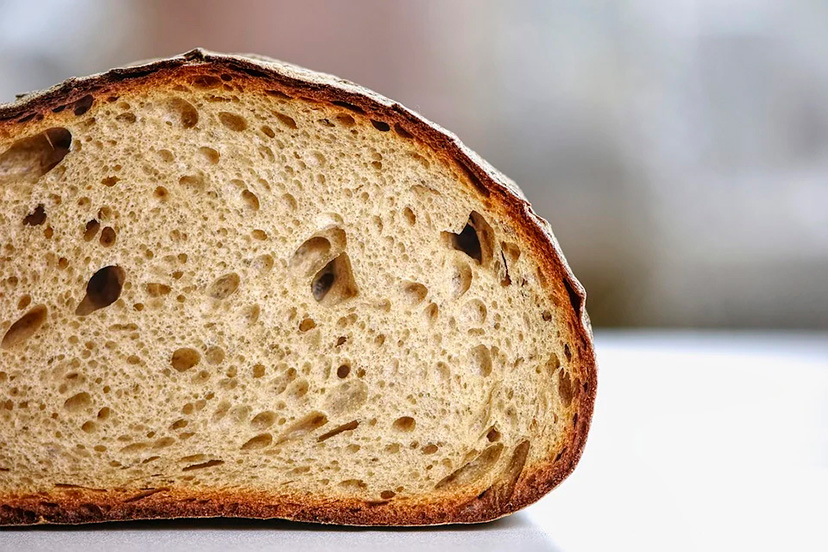Bread is a basic staple of the Mediterranean diet. For centuries in Ibiza it has been considered an essential subsistence food, a necessity of life, and the island’s bread makers have always used different flours to make their white or brown loaves, although all have a common denominator, in that they contain no salt. The special climate and humidity meant that salt was not used as it delayed the fermentation process. Soft wheat flours are used to make breads with a smooth matt surface and with the crumb rather than the crust as star of the show. The result is a dense, sour dough bread made with whole grains and fermented with wild yeasts, which has a 60 to 70 % water content which means that it remains soft and fresh for several days.
This “pa pagés” is the perfect accompaniment to cured sausages or meats, although it is also good with a splash of the island’s extra virgin olive oil and some good tomatoes from Ibiza’s fields. In fact, this has been the preferred breakfast of the islanders since time immemorial, and one of the simplest and most superb nutritious treats for anyone visiting Ibiza. This bread with aioli and a few olives makes the perfect aperitif, and the island’s restaurants unfailingly offer it as a pre-meal taster to their menus.
In recent years, an ancient wheat variety has been recovered and revived, saved from near extinction in Ibiza, known as “xeixa”, and it is now available to bakers thanks to 300 kilos of seeds donated by Mariano Prats from Cas Gasí. This type of grain, despite being less robust and spongy, is in fact much tastier than many other grains. It is a delicate wheat which requires more work and more craft must be applied to its kneading and rising, which is slower, and results in a wholemeal bread similar to that eaten in Ibizan houses many centuries ago, and it really is worth a taste. The fact that it is a completely natural product and additive- free, makes it easier to digest, healthier, and it has a higher fibre content.
Another feature of these large and solid loaves is that when they do go stale they are often reused in a type of salad known as “crostes” where the bread is softened with chunks of tomato, extra virgin olive oil, green pepper, onion and, if there is a fisherman in the house, little pieces of dried fish (“peix sec”). A gourmet treat, which graces the tables of restaurants and homes on the island even today.
There are many bakeries on Ibiza where these traditional breads are still made, such as Forn Can Blay, Can Bufí, Can Coves, Can Noguera, Gatzara, La Canela and Samovar. You can also try it in restaurants such as Es Pins or Es Ventall, where, along with the bill, visitors often ask for one of these loaves to take home under their arm, thanks to their unique recipes and ingredients such as “batafaluga” (anise) or carob, respectively.




